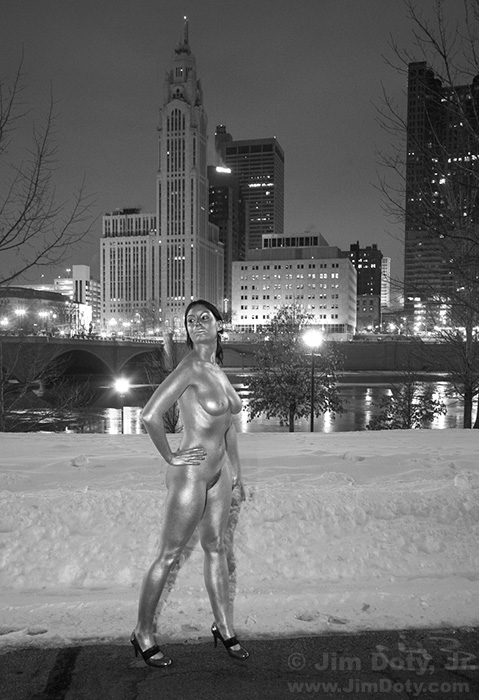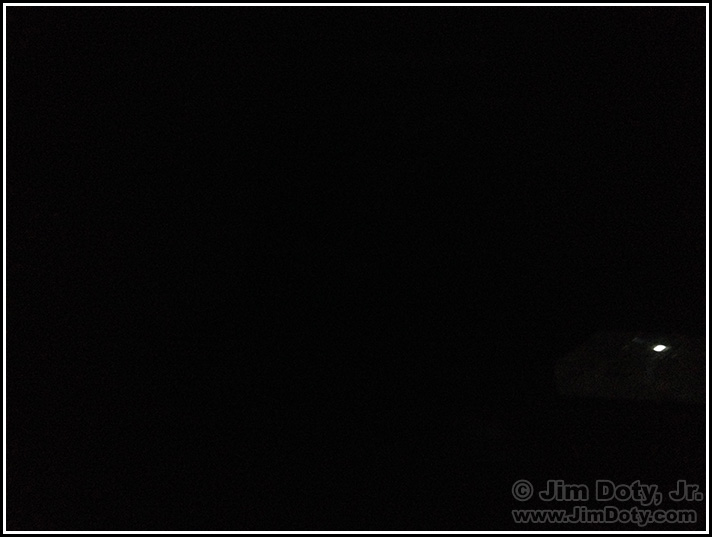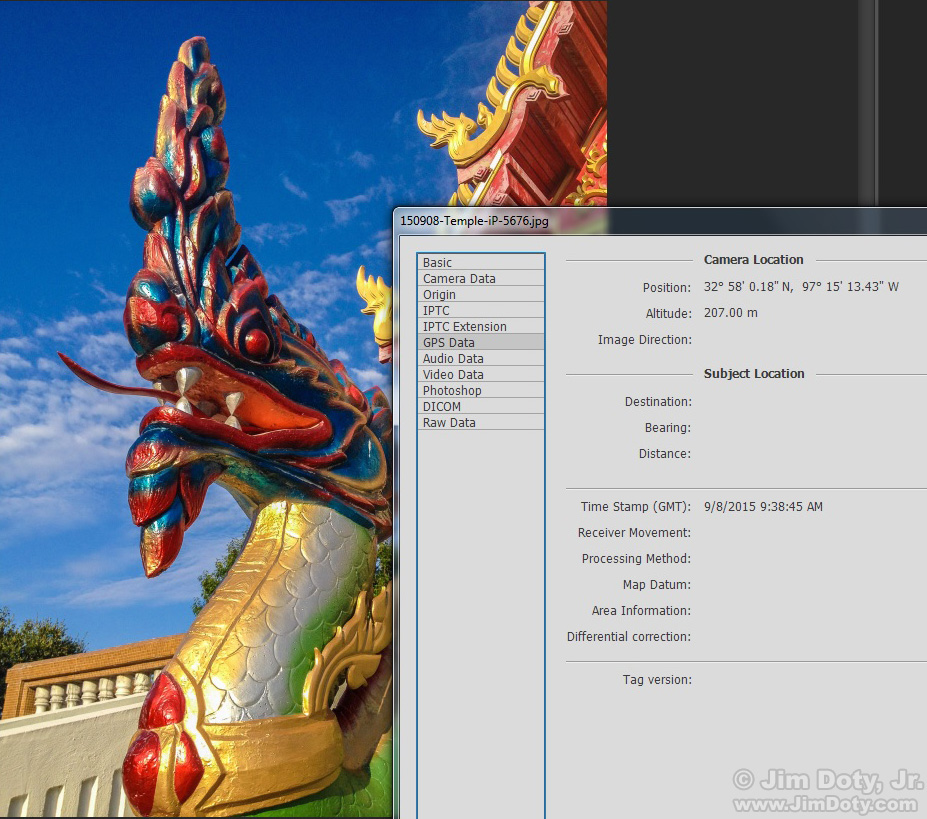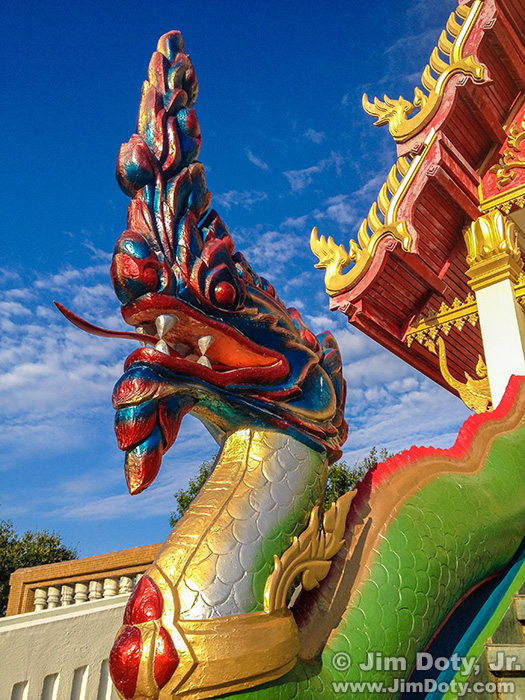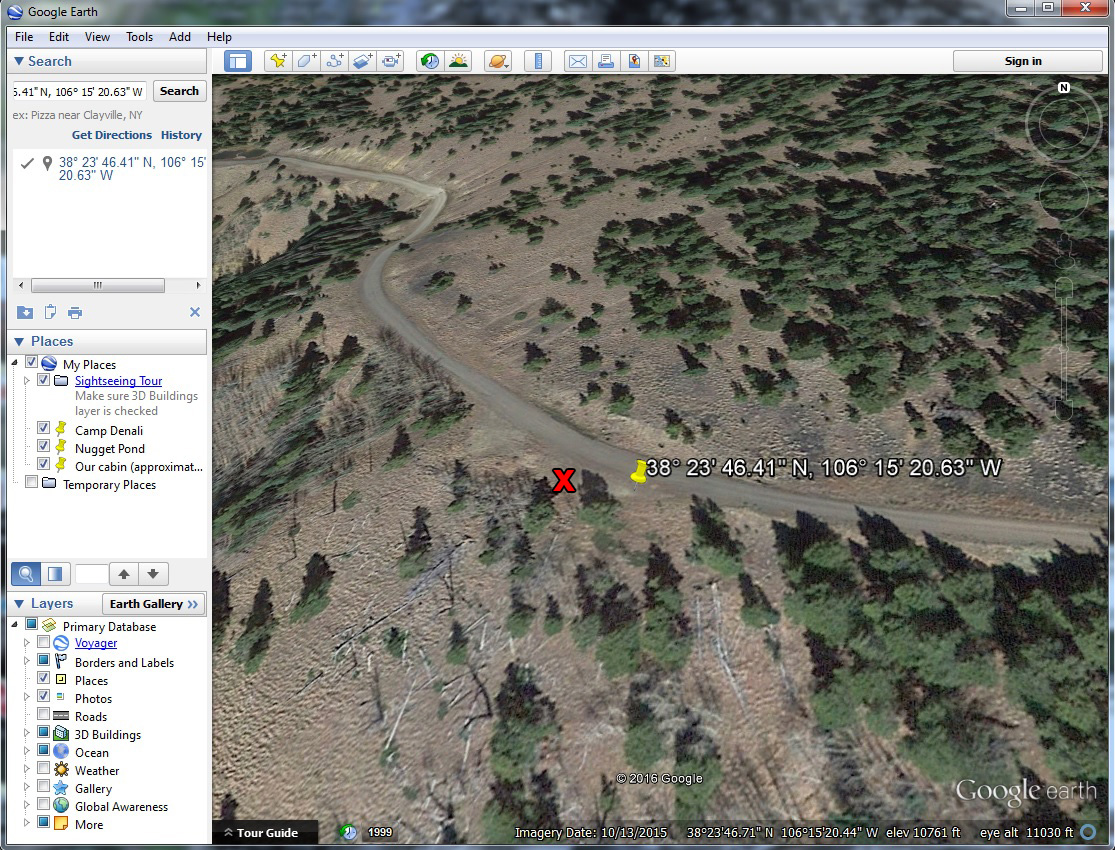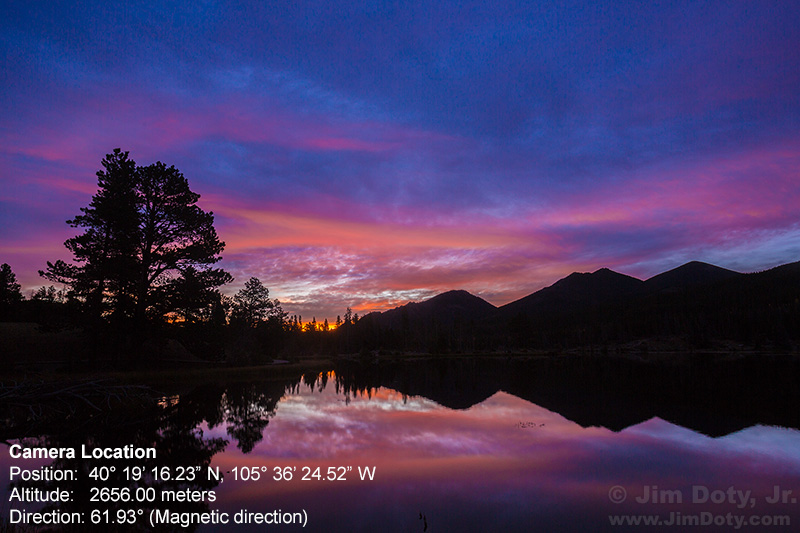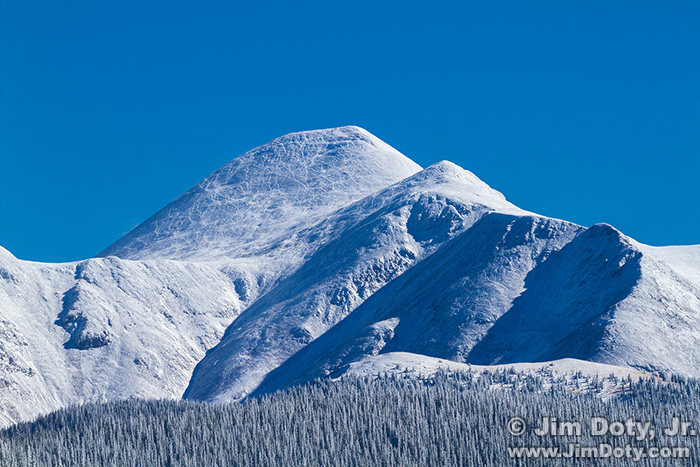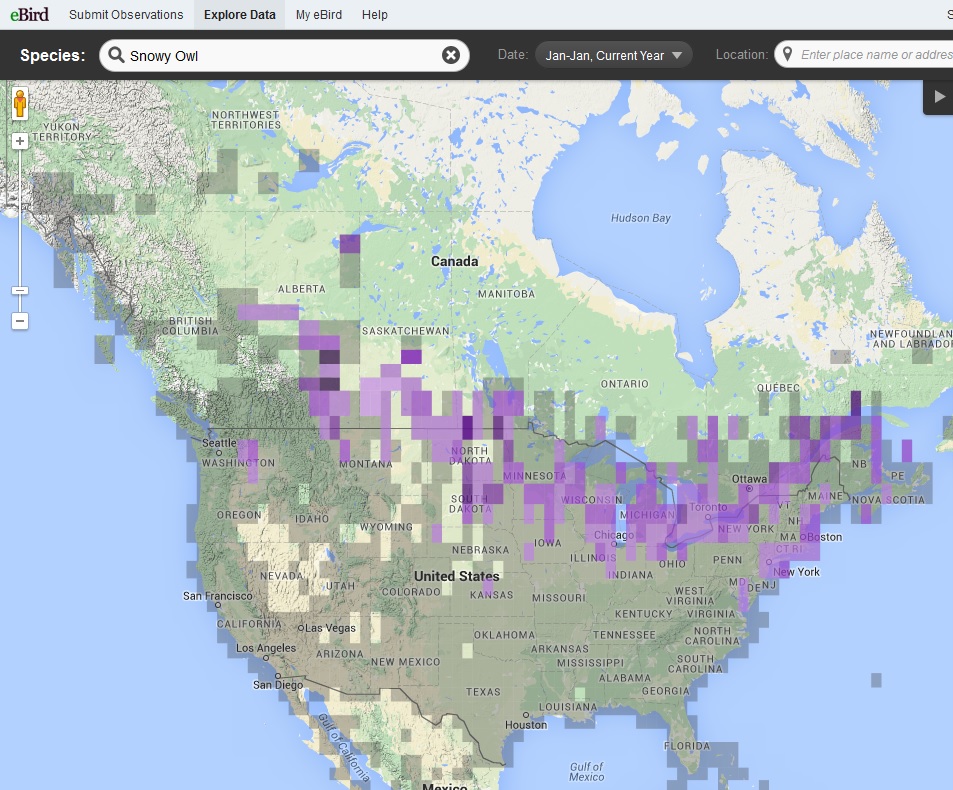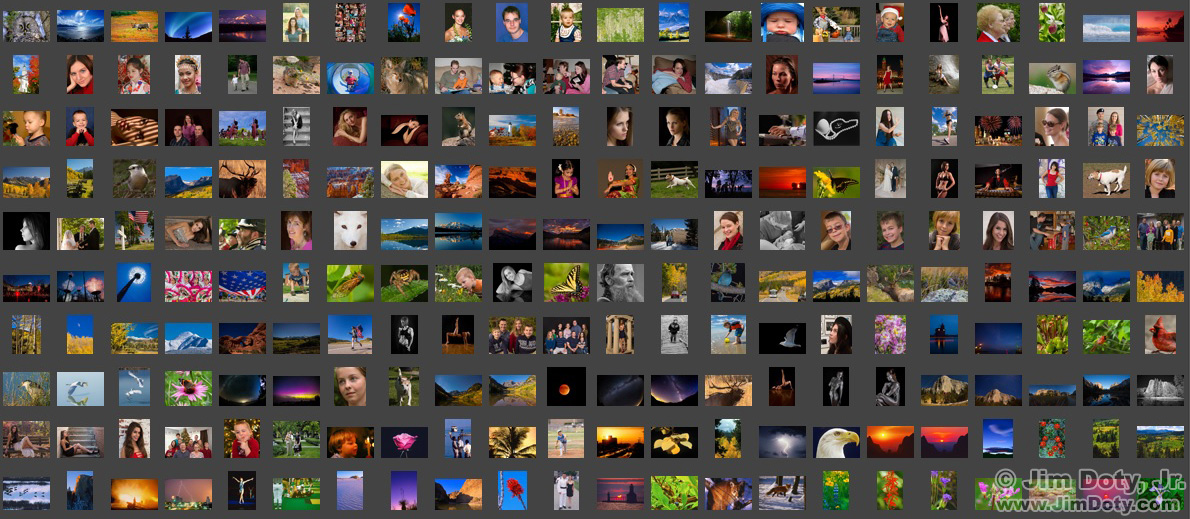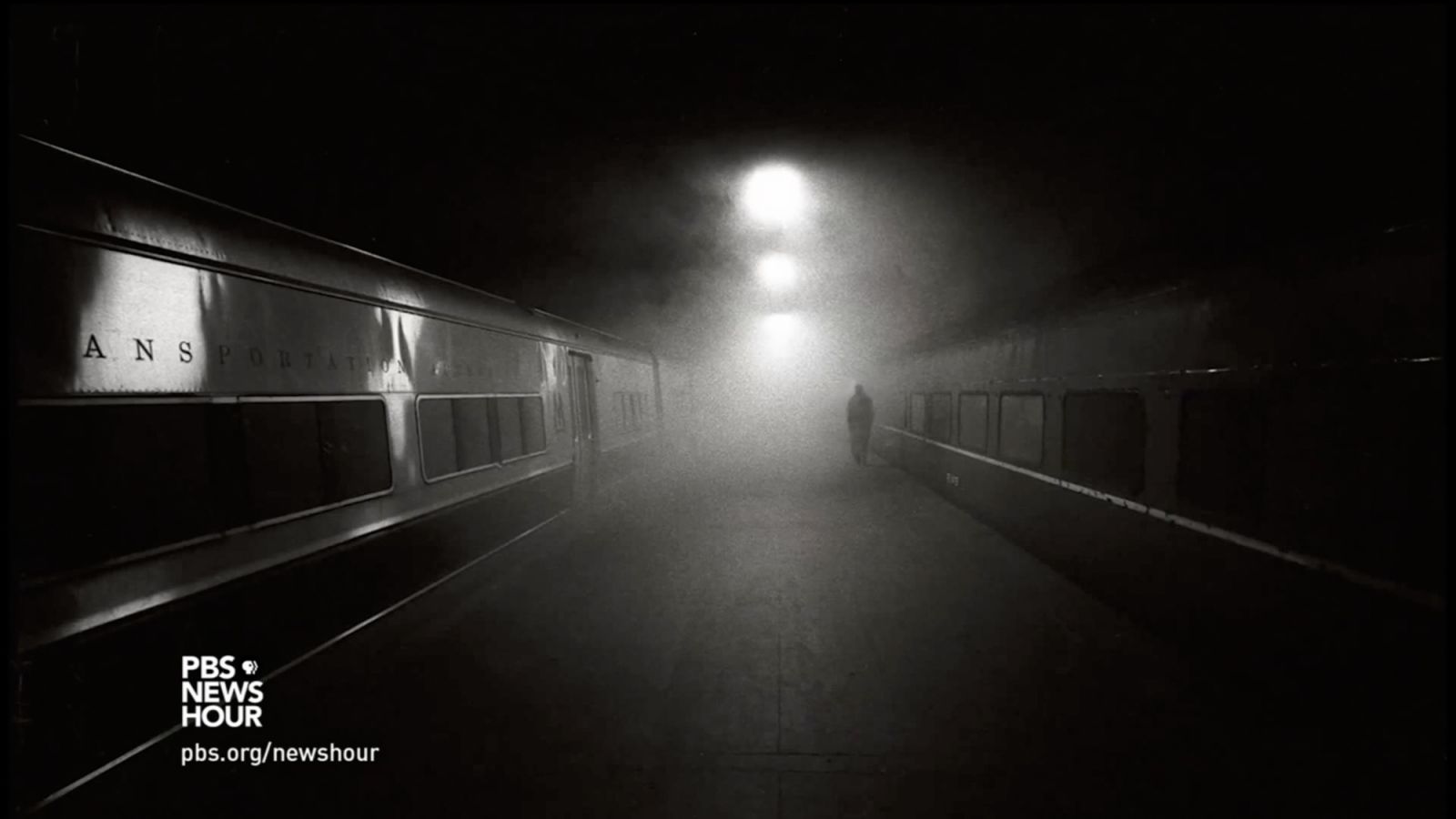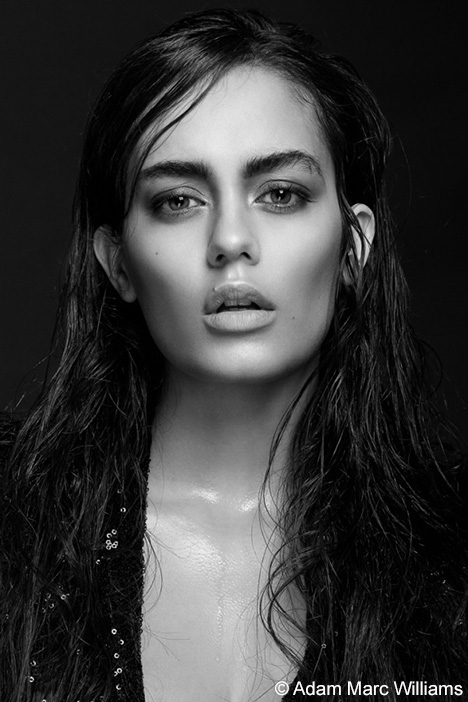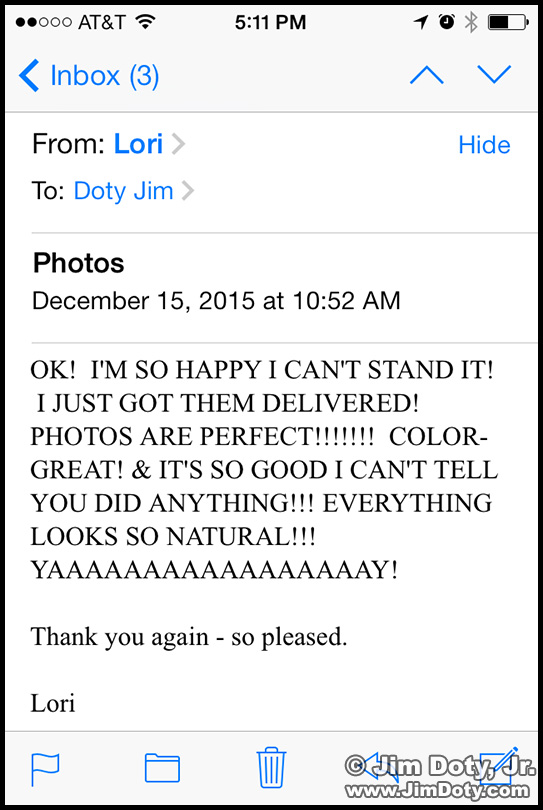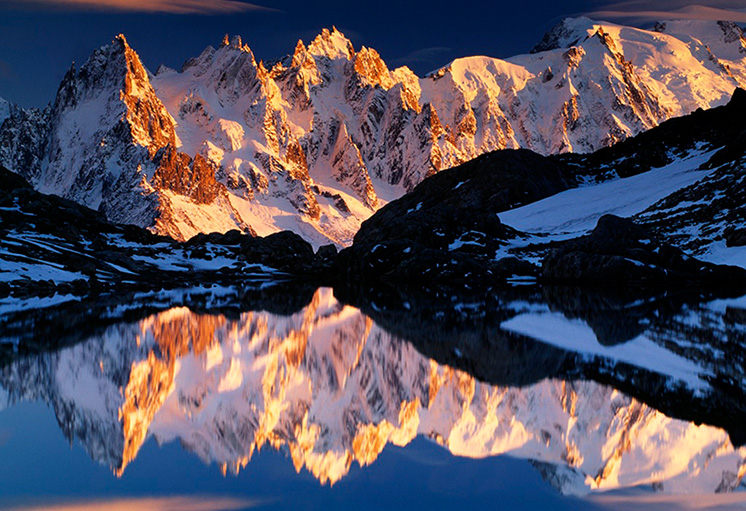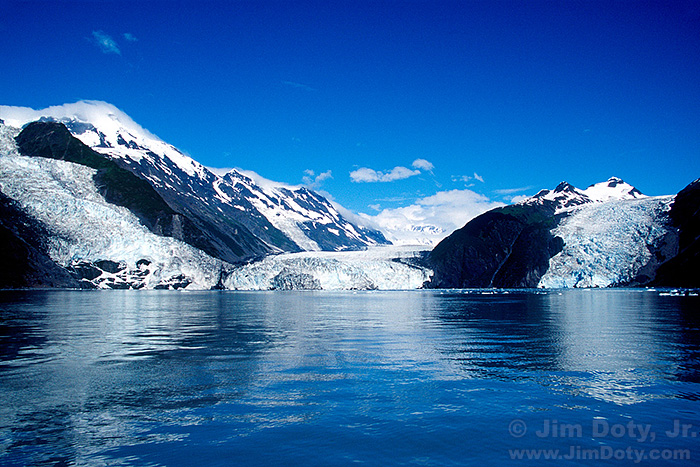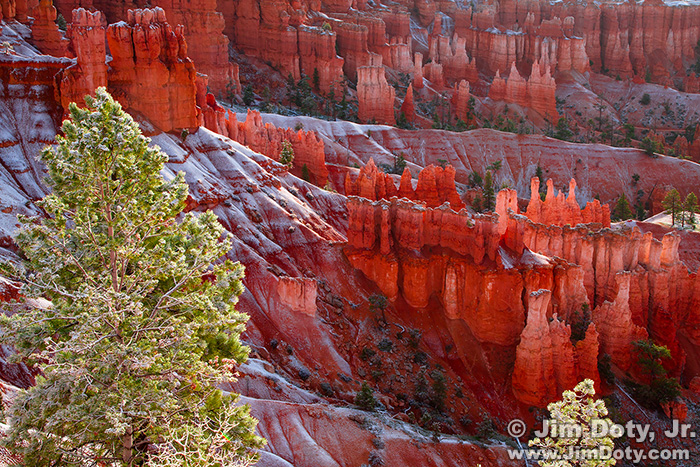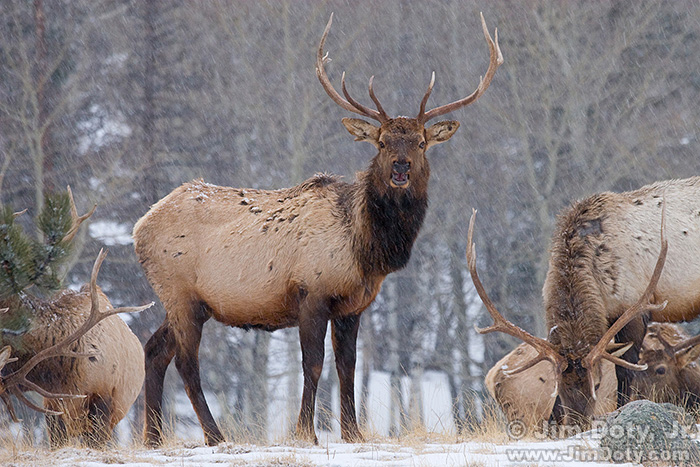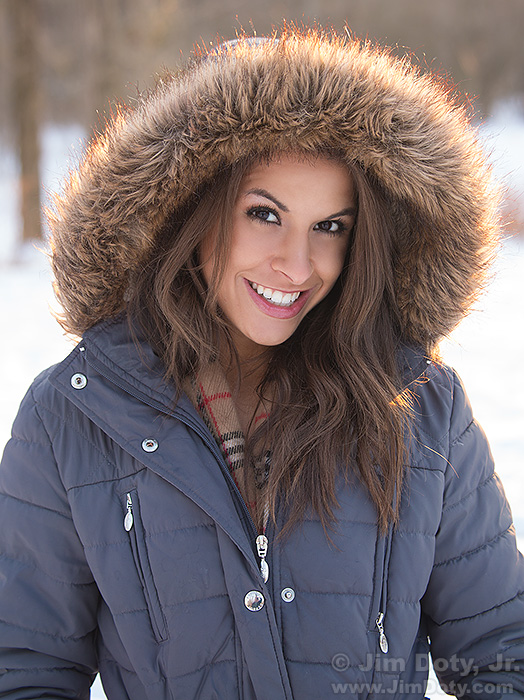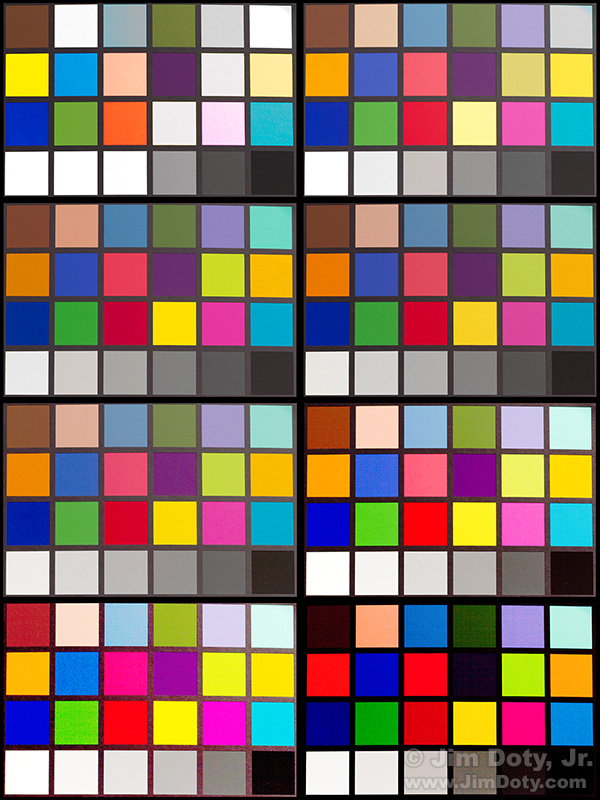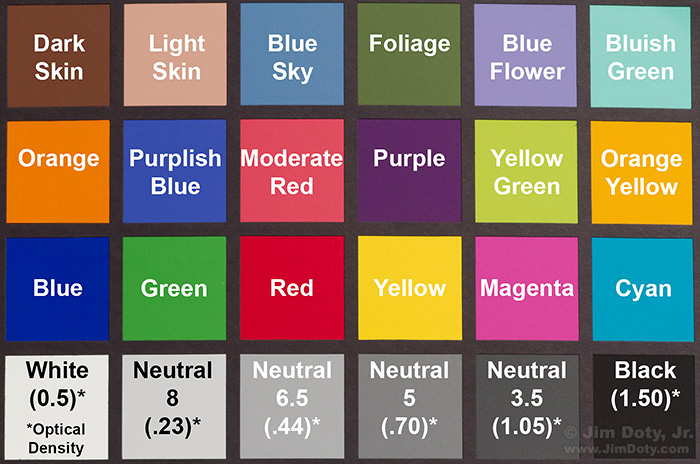Ashley and I were doing a photo shoot in the studio with silver body paint and we decided to go outside, despite the cold, winter weather. Isn’t this what everybody does on Valentine’s Day?
Today’s Quiz: What is The Location of This iPhone Photo?
UPDATE, 1:05 pm: That didn’t take long. Rich is our winner today. He is a photographer in Colorado. I was facing generally north taking pictures of El Capitan (with a better camera than my iPhone). I was standing in El Capitan Meadow (just south of Northside Drive) in Yosemite Valley, Yosemite National Park, California.
Where was I when I took this photo? Today’s quiz is being run simultaneously on my photography blog and my Facebook photography page. The winner will be determined by the time stamp of the comments as I receive them on my Facebook photography page (you must be logged in to Facebook to see my photography page).
How To Get GPS Coordinates Into Google Earth
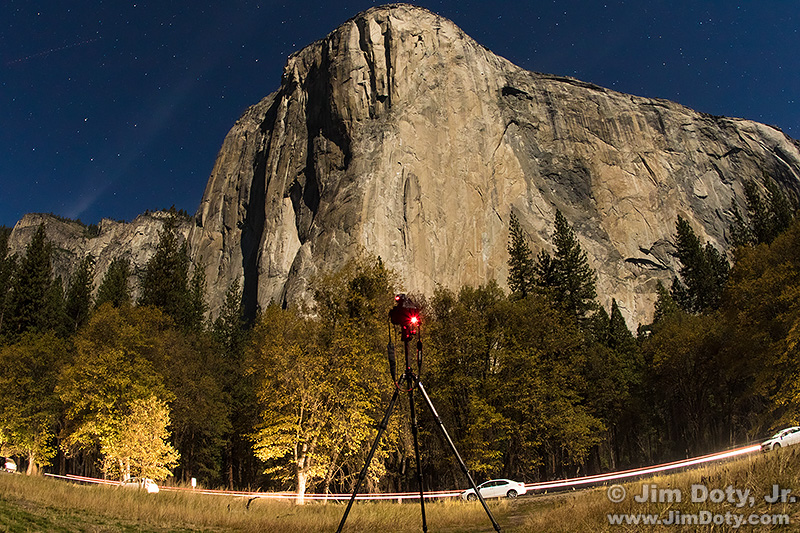
El Capitan in the moonlight along with a camera and tripod. El Capitan Meadow, Yosemite National Park, California.
GPS Data is increasingly important to photographers. It is the link between photos and photographic locations. It can be very helpful to drop GPS coordinates into a program like Google Earth to be able to tell exactly where a photo was taken. How do you do that?
Nature Photography Workshops – 2016
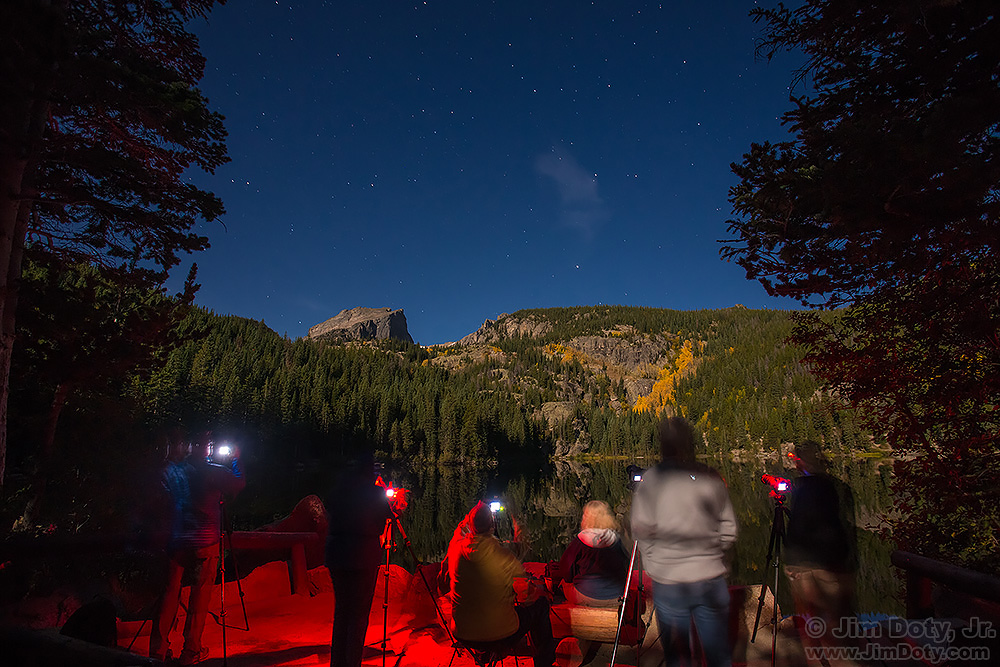
Moonlight on Bear Lake and Hallett Peak. Evening field trip. Photography workshop at Estes Park and Rocky Mountain National Park, Colorado. Click to see a much larger version.
I am excited to announce my nature photography workshops for 2016. These are action packed, fun filled workshops that are crammed full of practical photography tips and information that will supercharge your photography. Just ask anyone who has “survived” one of my workshops.
Beautiful Models at a Beautiful Location
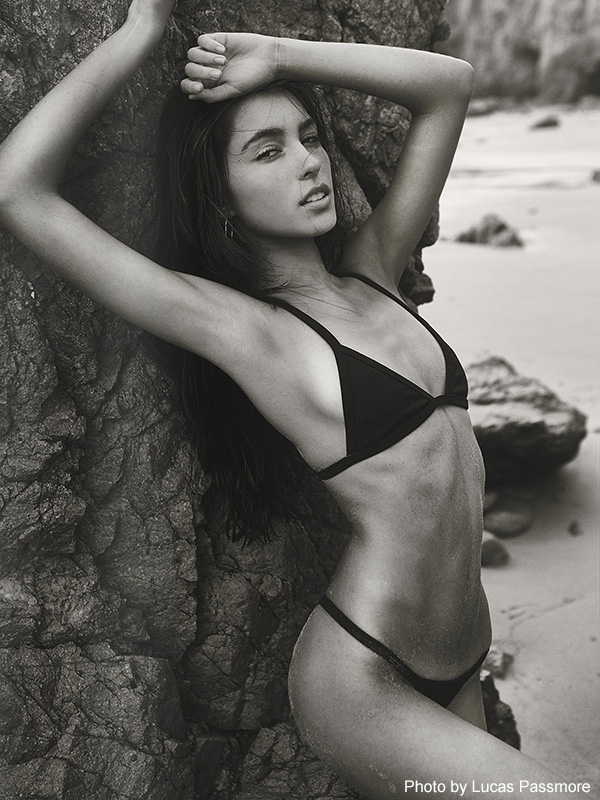 Did you know that with a “beautiful location” and a “beautiful model” and “using just the sun at the right time of day” you can get some beautiful images? Yep. I kinda figured you already knew that. And if you didn’t know that already here are the photos to prove it.
Did you know that with a “beautiful location” and a “beautiful model” and “using just the sun at the right time of day” you can get some beautiful images? Yep. I kinda figured you already knew that. And if you didn’t know that already here are the photos to prove it.
“How To” Series: Using GPS
The GPS system is increasingly important to photography. It will help you figure out where you took some of your more obscure photos and help you caption your photos. More and more photo editors want GPS information for the photos they publish. A GPS communicator could save your life. This series will help you learn the ins and outs of GPS, plus keep you and your family safe.
Originally posted Jan. 29, 2016. Updated Dec. 29, 2016. This whole series has been revised and re-posted here.
Checking the GPS Location Accuracy of Your Camera, Part Two
The fastest way to check location accuracy your camera’s GPS information is to take a photo at a known location that you can pinpoint on a map.
Posted Jan. 28, 2016. Updated Jan. 30, 2017.
Checking the GPS Location Accuracy of Your Camera, Part One
In my last article (on figuring out the name for Antora Peak) I noted the discrepancy between the GPS coordinates provided by my iPhone and the actual location where I took the photo (graphic above). They were off by about 20-30 feet. You can test the accuracy of the GPS information provided by your camera/smartphone. This article will show you how.
Posted Jan. 28, 2016. Updated Jan. 30, 2017.
The Why and How of Adding GPS Information To Your Photos
Should you join the growing number of photographers who “geotag” their photos (add GPS data). How do you do it? Are there times you shouldn’t?
Using Google Earth to Find the Name of a Mountain (and How to Get GPS Info into Google Earth)
What is the name of this mountain? Photo editors want to know. They like caption information. If you have a distinctive mountain in your photo, “Mountain in Colorado” won’t cut it with your friendly neighborhood photo editor. Here’s how to identify that mountain in Google Earth (and how to get GPS coordinates into Google Earth).
Posted Jan. 26, 2016. Updated Feb. 3, 2017.
How to Find and Photograph Snowy Owls
Winter is your opportunity to photograph Snowy Owls. When it is cold and snowy there are a lot of snowy owl sightings across the northern U.S. Don’t delay. If the winter turns warmer the owls will head farther north. On the other hand, if the winter turns colder they may move even farther south.
This is the first in an ongoing series of articles on Snowy Owl photography. Originally posted January 25, 2016. Revised and updated Dec. 24, 2017.
Organize Your Photo Archive
Is your photo archive well organized, or do you have a hard time finding a specific photo? Can you quickly an easily find all of your elk photos from Colorado, or your cousin Harry’s birthday photos?
What makes a photographer when everyone is taking pictures?
Excellent question. Ken Van Sickle’s answer is in this article and video that are part of the Brief But Spectacular series at PBS.
How To Shoot That Edgy Look
So you are doing a portrait shoot and you want an “edgy” look. How do you get it? Read this article by Adam Marc Williams for a quick introduction (and buy a spray bottle).
How To Work With A Model When The Windchill is 4°
You would think a windchill of 4° Fahrenheit (-16°C) would be too cold for a photo shoot, but not with some models. We booked this January shoot weeks in advance so we knew it would be cold, but we had no idea how cold until the day arrived. Here’s the story behind this image and how to work with a model when it is so cold.
Martin Luther King, “I have a dream . . .”
The full seventeen minute speech is here.
Retouched Images: Super Excited Clients Make My Day!
Lori sent me some extended family group photos (I was not the photographer) and asked me to retouch them. I had to add a person to one photo and do some face swapping between some of the photos. The goal was to do it in such a way that you couldn’t tell I added a person and swapped faces.
Art Wolfe – Don’t Miss Your Chance To Download This Free Photography Video
Art Wolfe is a world class photographer. If I could pick only 5 photographers to go out and shoot with, Art would be on that list. His work is stunning. I own several of his books, some for inspiration and some for “how to” information. So I jumped at the chance to get his 30 minute video, “Ten Deadly Sins of Composition”.
“How To” Series: Winter Photography
In addition to all of the usual photographic challenges, winter provides some extra complications, especially in terms of metering. So I began my series of articles on winter photography. I just finished revising and updating the series. I also revised some related articles and added new ones. They are all linked below. They will help you meet the unique challenges of winter photography. So read the articles, get out there, have fun, and create some stunning images!
This series is updated every year in January. The January 2017 update is here.
The Sunny f16 Rule Isn’t Reliable in Winter
The Sunny f16 rule is really useful on bright sunny days in the spring, summer, and fall, but you can’t rely on it on snowy winter days. It will often lead you astray. There are much more accurate ways to meter in the winter.
Testing Your Camera’s Snow Exposure Latitude
Exposure compensation is one of the most important keys to good exposures, great images, and the best colors your digital camera is capable of producing. Knowing your camera’s snow exposure latitude is one of the keys to using exposure compensation in a winter scene. It is different for every camera model. You won’t find it in your camera’s manual but it is easy to determine with a simple test.
Protect Your Camera Gear in the Cold and Snow
Cold and snow can cause a lot of damage to your camera gear. Something as simple as shooting outside and taking your camera inside can cause hidden damage that won’t show up until days or weeks later. The simple steps in this article could save you hundreds of dollars in repair bills.
Metering Nighttime Winter Scenes
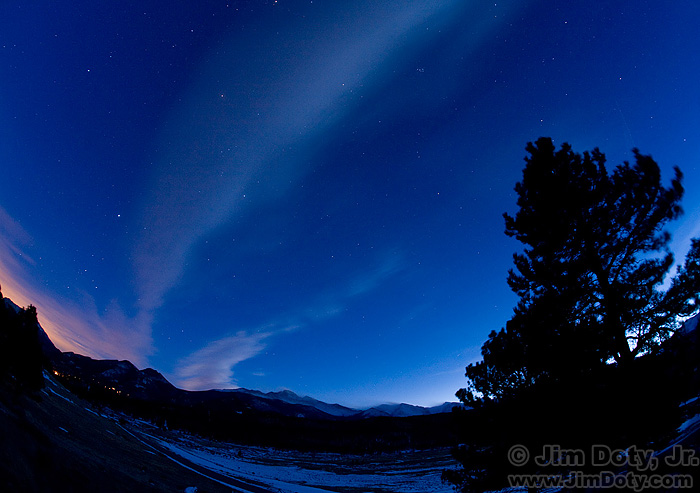
Twilight, Rocky Mountain National Park. Sirius, Canis Major, Orion, Taurus, the Hyades star cluster, and the Pleiades star cluster are all visible in the fading light. Click for a larger version.
You can photograph the night sky year around, but winter brings an added bonus: SNOW! When you don’t have the benefit of moonlight, most of the year you get a black, silhouetted skyline. In winter you have the possibility of including the highly reflective snow. For many photographers winter is their favorite time of year to photograph the night sky.
Metering Evening Winter Scenes
Just like metering daytime winter scenes, the key to metering evening winter scenes is knowing what to meter and deciding how much exposure compensation to use.
Metering Wildlife in the Snow, Part Two
Most wildlife are medium to dark in tone, making them a challenge to meter properly in the bright, white tones of winter. If you trust your camera’s auto exposure modes, the odds are good you won’t get the best exposure. If you switch over to manual exposure and make the right decisions, you can get great exposures and better quality photos (more about that later).
Metering Wildlife in the Snow, Part One
Metering dark toned wildlife in the snow is a major exposure challenge. It is usually best to avoid large “burned out” areas (washed out, featureless white) in a nature or landscape photograph, but with properly exposed snow, the wildlife can be so dark as to lose all texture. On other hand, metering for the wildlife can burn out the snow. So what do you do?
Metering People in the Snow
The white snow in a winter scene can and often does fool a camera meter into underexposing a portrait, so here are the steps to take to get the right exposure. I throw in a few portrait suggestions too.
Metering Daytime Winter Scenes
Metering for scenes with a lot of snow can be tricky since the bright snow fools the camera meter. I see a lot of winter photos with gray snow, which means the camera meter did exactly what it was designed to do and the camera owner didn’t know how to use exposure compensation. The solution is quite simple provided you know what to do.
How To Test Your Camera’s Color Exposure Latitude
Testing your camera’s color exposure latitude is a key to getting good color in your digital photographs. This is a sequel to The Best Colors Come From the Best Exposures. I would suggest you read that article first.
The Best Colors Come From the Best Exposures
This has to be one of the best kept photographic secrets: The more accurate your exposures are, the better your colors will be. Why? If your exposures are off, the colors in your photograph will shift in different directions. You can correct the exposure in post processing, but you can’t correct the color shifts. Since the colors shift in different directions, if you try to correct one color (as you will see below), the other colors will get even worse.

